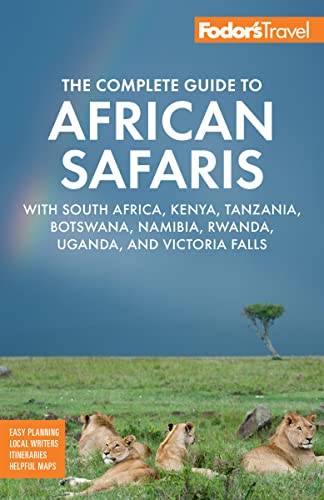Amboseli National Reserve, immediately northwest of Mt. Kilimanjaro and 240 km (150 miles) southeast of Nairobi on the Tanzanian border, is certainly one of the most picturesque places in the whole of Africa to watch game. Where else could you watch a great herd of elephants on a wide empty plain dominated by Africa's highest mountain, Kilimanjaro?
At dawn, as the cloud cover breaks and the first rays of sun illuminate the snow-capped 5,895-meter (19,340-foot) peak, the sky, colored by rosy pinks and soft reds, provides the perfect backdrop for the plains below. It gets even better at dusk, when the mountain stands out in stark relief against the fiery sun.
Amboseli has a checkered history. First established as a natural reserve in 1948, it was returned to Maasai ownership and management in 1961 but soon became environmentally degraded with too many cattle and too many tourists. Some 10 years later, 392 square km (151 square miles) were designated a national park, and cattle-grazing was forbidden. This angered the pastoral Maasai, who took their revenge by killing a majority of the rhino population. Eventually peace was restored with some expedient land swapping, and today there's a responsible environmental program that controls the well-being of the game, puts limits on tourist numbers, and enforces a strict policy on off-road driving.
There are five different habitats in Amboseli: open plains, acacia woodland, thornscrub, swamps, and marshlands. To the west is the Ol Donyo Orok massif and Lake Amboseli, which is usually dry. But when the heavy rains return, so do the flamingos, and the surrounding area becomes green and lush again. Expect some impassable roads at these times, as well as when the lake is completely dry because the fine alkaline dust that blows up from the lake bed is hell for tires.
Amboseli is filled with great game: zebra, warthog, giraffe, buffalo, impala, wildebeest, the long-necked mini giraffe-like gerenuks, and baboons galore. But your chances of seeing predators are not as good as in the Masai Mara. Maasai hunters almost killed off Amboseli’s lions because they preyed on their herds of cattle. Those that survived are still skittish and often not comfortable with vehicles. Interestingly, the hunting methods of cheetahs within the park have changed dramatically because of tourist pressure. Accustomed to hunting at dawn and dusk, they've now resorted to hunting at midday—tourist siesta time—with poorer success rates, thus their numbers are decreasing. But if it's elephants you're after, then Amboseli is the place. Perhaps the oldest and most studied elephant population in sub-Saharan Africa lives here. There are more than 1,500 of these great pachyderms today, and because they’re accustomed to visitors and vehicles you'll experience eyeball-to-knee-high close encounters.
Game-viewing is best around the main swamps of Enkongo Narok, which means "black and benevolent," and the Amboseli landmark, Observation Hill. Enkongo Narok, in the middle of the park, is where you can see water seeping up from the lava rocks. Observation Hill provides a surefire opportunity to spot game, especially elephants, as it looks out over the plains.
Bird life is also prolific, with more than 420 recorded species. There are dozens of birds of prey including more than 10 different kinds of eagles. In the swamp areas, which are fed by the melting snow of Kilimanjaro, seasonal flamingo and more than 12 species of heron are among the profusion of water birds.






